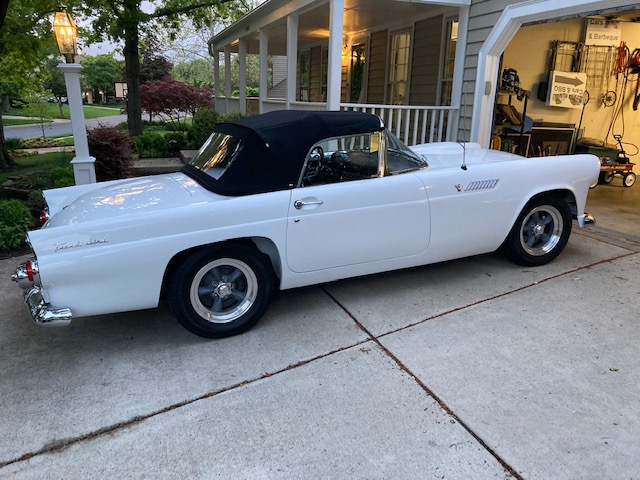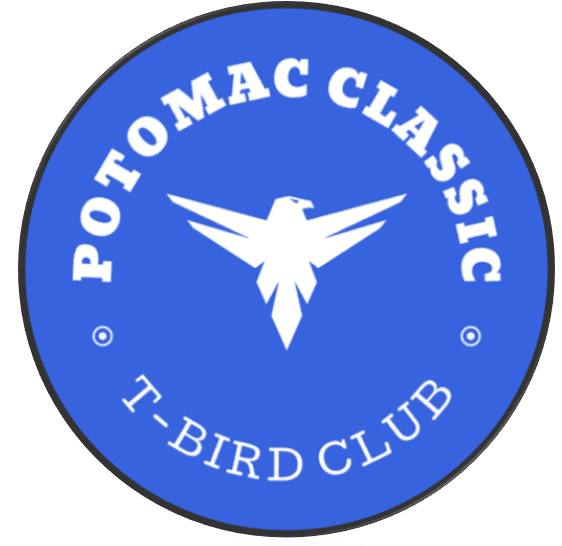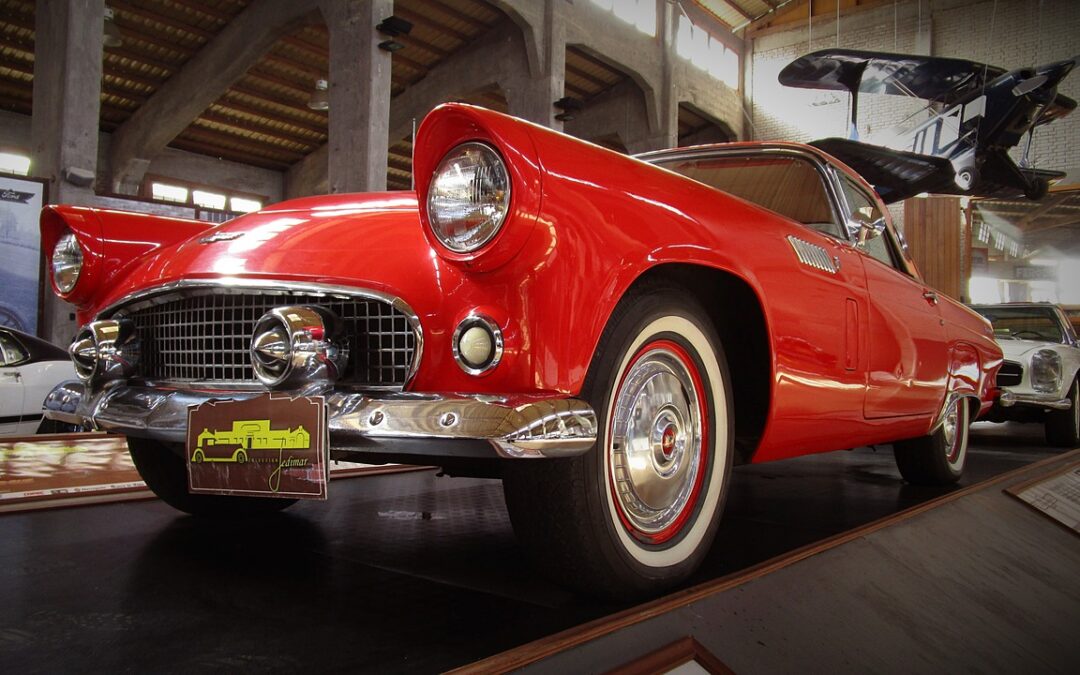
Exploring the Evolution of the Ford Thunderbird: A Comparative Analysis of the 1955, 1956, and 1957 Models
by James Luehrs | Apr 14, 2024 | 1955 Ford Thunderbird, 1956 Ford Thunderbird, 1957 Ford Thunderbird
Introduction:
The Ford Thunderbird, introduced in 1955, holds a special place in automotive history as one of America’s most iconic sports cars. Over its production run, which lasted until 1997, the Thunderbird underwent several design changes and upgrades, each iteration bringing its own unique features and characteristics. In this comparative analysis, we’ll delve into the differences between the 1955 Thunderbird and its successors, the 1956 and 1957 models, focusing on various aspects such as body design, engine options, interior styling, and more.
Body Design:
One of the most striking differences between the 1955 Thunderbird and the subsequent years lies in its body design. The 1955 model boasts a distinctively rounded shape, setting it apart from the more angular styling of the 1956 and 1957 models. This rounded silhouette lends the 1955 Thunderbird a timeless elegance, with smooth lines flowing seamlessly from front to back.
Key to the 1955 Thunderbird’s design are its unique styling cues, such as the prominent hood scoop and the bold front grille. The hood scoop, positioned near the front of the vehicle, not only serves a functional purpose by channeling air to the engine but also adds a touch of aggression to the car’s appearance. Meanwhile, the front grille features a distinctive egg-crate pattern, contributing to the car’s overall aesthetic appeal.
Compared to its successors, the 1955 Thunderbird’s body design exudes a sense of understated sophistication. While the 1956 and 1957 models introduced more angular lines and prominent fins, the 1955 Thunderbird’s rounded contours remain a testament to the design sensibilities of the era.
Engine Options:
Another significant difference between the 1955 Thunderbird and later models lies under the hood. The 1955 Thunderbird originally came equipped with a 292 cubic inch V8 engine, delivering ample power and performance for its time. This engine, while capable, was eventually replaced by larger displacement options in the 1956 and 1957 models.
In contrast, the 1956 Thunderbird offered a 312 cubic inch V8 engine as its standard powerplant, providing an increase in horsepower and torque compared to its predecessor. This larger engine displacement appealed to enthusiasts seeking greater performance and acceleration.
The trend continued with the 1957 Thunderbird, which further expanded its engine options to include a 312 cubic inch V8 with optional supercharging. This supercharged engine variant, known as the “F-code” engine, pushed the boundaries of performance even further, cementing the 1957 Thunderbird’s reputation as a formidable sports car.
Transmission:
In addition to differences in engine options, the transmission offerings varied between the 1955, 1956, and 1957 Thunderbird models. The 1955 Thunderbird was initially available with a 3-speed manual transmission, complemented by an optional overdrive feature for enhanced fuel efficiency on the highway.
However, the 1956 Thunderbird introduced the option of a Ford-O-Matic automatic transmission, providing greater convenience for drivers who preferred automatic shifting. This automatic transmission became a popular choice among buyers and contributed to the Thunderbird’s appeal as a luxurious yet sporty cruiser.
Interior Styling:
Inside the cockpit, each Thunderbird model offered its own unique interpretation of luxury and comfort. The 1955 Thunderbird’s interior featured a stylish dashboard layout with analog gauges and a centrally located speedometer. Upholstery options included plush vinyl and cloth materials, with customizable color schemes to suit individual preferences.
In contrast, the 1956 Thunderbird’s interior received subtle refinements, including updated upholstery materials and a revised instrument cluster design. The introduction of chrome accents and additional trim elements added a touch of sophistication to the cabin, enhancing the overall premium feel of the vehicle.
By the time the 1957 Thunderbird rolled off the assembly line, interior styling had evolved even further. The dashboard received a modernized layout, with ergonomic controls and a revised instrument cluster for improved visibility. Upscale features such as power windows, air conditioning, and a telescopic steering wheel were offered as optional extras, catering to buyers seeking the ultimate in comfort and convenience.
Convertible Top Mechanism:
One notable feature exclusive to the 1955 Thunderbird is the presence of porthole windows on the removable hardtop. These circular windows, positioned behind the driver and passenger seats, added a touch of flair to the car’s exterior design while providing additional visibility for occupants.
Unlike the 1956 and 1957 models, which featured a conventional convertible top mechanism, the 1955 Thunderbird’s top operated via manual latches and levers. While slightly less convenient than the later models’ power-operated convertible tops, the 1955 Thunderbird’s top mechanism exemplified the simplicity and elegance of early automotive engineering.
Conclusion:
In summary, the 1955 Thunderbird stands out as a timeless classic with its distinctive body design, refined interior, and capable performance. While subsequent models introduced various upgrades and enhancements, the 1955 Thunderbird remains a beloved icon among automotive enthusiasts and collectors alike.
From its rounded contours to its iconic styling cues, the 1955 Thunderbird embodies the spirit of a bygone era while continuing to captivate audiences with its timeless appeal. Whether cruising down the open road or turning heads at a classic car show, the 1955 Thunderbird continues to evoke feelings of nostalgia and admiration, ensuring its legacy as one of America’s most cherished sports cars.

